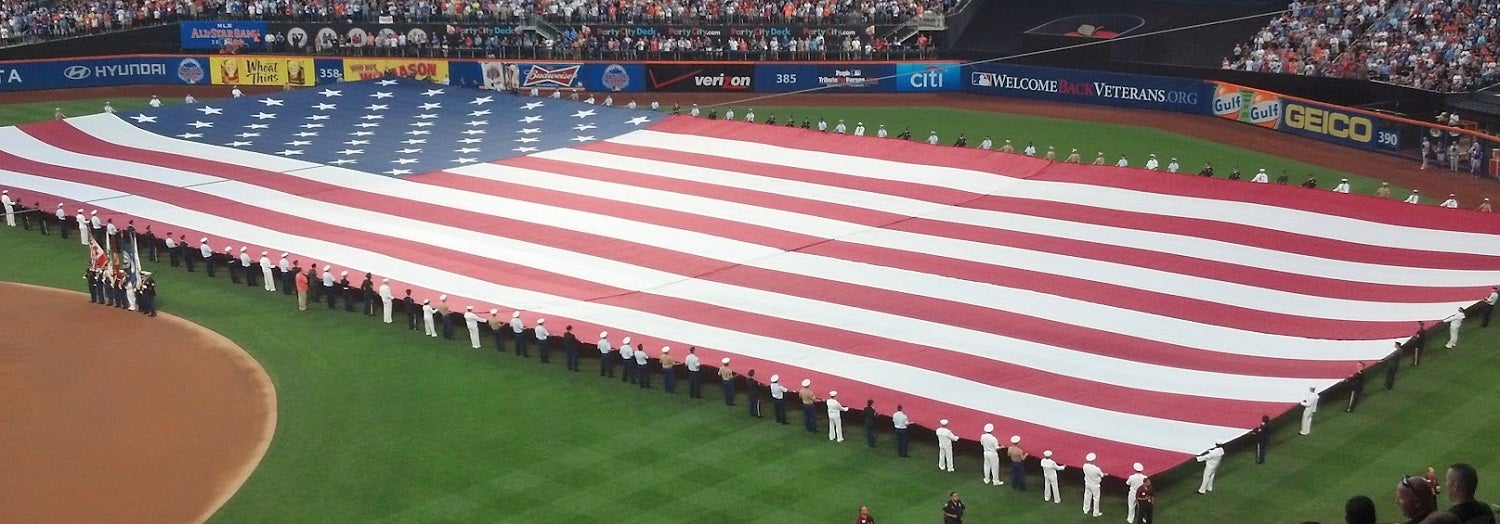The major leagues 'must be extended from coast to coast, from north to south.
Hall of Famer Ford Frick, Commissioner of Baseball 1951 - 1965

GEOGRAPHY: BASEBALL COAST TO COAST
Since the days of players traveling by train to get from stadium to stadium, geography has always played an important role in professional baseball. Where are baseball teams established and why? How do people and the physical environment influence the game? In this unit, students will explore these questions and more through map work, research, and creative activities. They will work both independently and collaboratively to learn about geographical concepts such as location, population, and culture.
THEMATIC UNIT OBJECTIVE
- Analyze maps to determine aspects of location and place.
- Calculate population density and recognize the impact of population on an area.
- Understand the concept of culture and be able to identify aspects of cultural geography.
- Appreciate and understand the role of geography in professional baseball.
ROOKIE (GRADES 3-5)
LESSON 1 (PRE-VISIT): SAFE AT HOME: LOCATION AND BASEBALL
Students will be introduced to latitude and longitude coordinates and learn how to use them to find a given location.
LESSON 2 (PRE-VISIT): IF YOU BUILD IT, THEY WILL COME: POPULATION AND BASEBALL
Students will recognize, calculate, and understand the impact of population and population density.
LESSON 3 (PRE-VISIT): HEY GETCHA…SUSHI?: THE CULTURAL GEOGRAPHY OF BASEBALL
Students will explore the differences between baseball teams and stadiums in various regions to understand the concept of culture and how it influences the teams.
LESSON 4: ON-SITE VISIT OR VIDEO CONFERENCE
Students will work with museum teachers to reinforce concepts and ideas introduced in the classroom.
Book your:
LESSON 5 (POST-VISIT): CALLED UP TO THE MAJORS: YOUR TEAM!
Students will work collaboratively on a creative project to demonstrate their understanding of physical and cultural geography as it relates to baseball.
INTERMEDIATE (GRADES 6-8)
LESSON 1 (PRE-VISIT): SAFE AT HOME: LOCATION AND BASEBALL
Students will review the concepts of latitude, longitude, weather, and climate.
LESSON 2 (PRE-VISIT): ROAD TRIP! BASEBALL ON THE MOVE
Students will explore how changes in transportation technology throughout the twentieth century affected professional baseball teams.
LESSON 3 (PRE-VISIT): HEY GETCHA…SUSHI? THE CULTURAL GEOGRAPHY OF BASEBALL
Students will explore the differences between baseball teams and stadiums in various regions to understand the concept of culture and how it influences the teams.
LESSON 4: ON-SITE VISIT OR VIDEO CONFERENCE
Students will work with museum teachers to reinforce concepts and ideas introduced in the classroom.
Book your:
LESSON 5 (POST-VISIT): CALLED UP TO THE MAJORS: YOUR TEAM!
Students will work collaboratively on a creative project to demonstrate their understanding of physical and cultural geography as it relates to baseball.
ADVANCED (GRADES 9-12)
LESSON 1 (PRE-VISIT): SAFE AT HOME: THE BALLPARKS OF BASEBALL
Ballparks are often referred to as "sacred grounds." In this lesson, students explore ballparks from all eras of baseball history looking for ways in which ballpark design has changed over time.
LESSON 2 (PRE-VISIT): ROAD TRIP! BASEBALL ON THE MOVE
Students will explore how changes in transportation technology throughout the twentieth century affected professional baseball teams.
LESSON 3 (PRE-VISIT): "HEY GETCHA...SUSHI?" THE CULTURAL GEOGRAPHY OF BASEBALL
Students will explore the idea that the food sold at a team's ballpark is an important part of cultural expression.
LESSON 4: ON-SITE VISIT OR VIDEO CONFERENCE
Students will work with museum teachers to reinforce concepts and ideas introduced in the classroom.
Book your:
LESSON 5 (POST-VISIT): THE DODGER DEBATE
A team's re-location affects many people. In this lesson, students learn about the stakeholders involved in team re-location controversies.
COMMON CORE STANDARDS
CCSS ELA CONTENT: SL.3.1/4.1/5.1, SL.3.4/4.4/5.4
MCREL STANDARDS: Geography.Level 2.Standards 1,2,3,4,5,6
EXPLORE OUR CURRICULUM
The Museum currently offers 15 baseball-themed curriculum components that provide interactive and meaningful learning engagement.
PLAN A VIRTUAL FIELD TRIP
The next best thing to visiting the National Baseball Hall of Fame Museum is participating in a Virtual Field Trip. The Museum's award winning programs bring the wonders of Cooperstown to the classroom.
PLAN A FIELD TRIP
The National Baseball Hall of Fame and Museum proudly presents fun-filled, content rich experiences for students from grades 3 to 12. Our field trips are all aligned with National Learning Standards.
EXPLORE OUR CURRICULUM
The Museum currently offers 15 baseball-themed curriculum components that provide interactive and meaningful learning engagement.
PLAN A VIRTUAL FIELD TRIP
The next best thing to visiting the National Baseball Hall of Fame Museum is participating in a Virtual Field Trip. The Museum's award winning programs bring the wonders of Cooperstown to the classroom.
PLAN A FIELD TRIP
The National Baseball Hall of Fame and Museum proudly presents fun-filled, content rich experiences for students from grades 3 to 12. Our field trips are all aligned with National Learning Standards.

